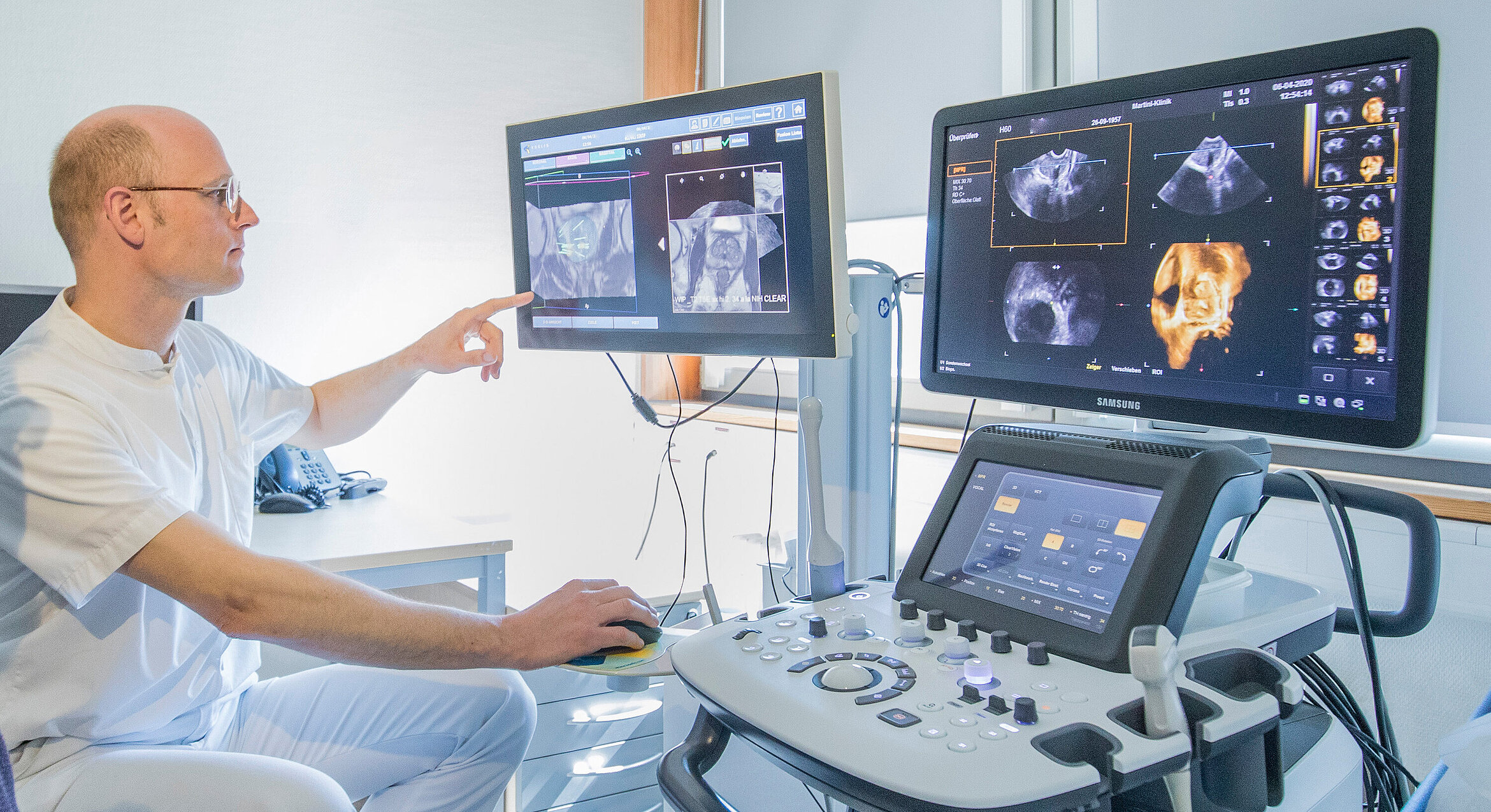A biopsy is the next step towards diagnosis
If there is reason to suspect you have a prostate carcinoma (due to an elevated PSA level and/or findings from palpation of the prostate), the next step is usually taking a sample of tissue from the prostate. Due to the prostate’s location in the body, different methods are used to access it.
Transrectal prostate biopsy
Biopsies of the prostate are currently often conducted via the back passage (rectum) under local anaesthetic in what is known as a transrectal ultrasound scan (TRUS) biopsy. In order to reduce the risk of infection, it is recommended practice to test for antibiotic resistance in the intestinal bacteria so that antibiotic treatments can be adjusted if necessary. An alternative procedure is perineal biopsy, also performed under local anaesthetic.
Perineal prostate biopsy
In this procedure, the biopsy is taken via the perineum under local anaesthetic. This method carries an exceptionally low risk of infection, making it an ideal choice if a patient has specific infection risk factors. Such factors include resistance against common antibiotics being identified in a rectal swab, diabetes mellitus, patients who take immunosuppressives, prostate inflammation and past surgeries on the rectum. The risk of infection is lower in perineal biopsies because the intestinal mucosa is not perforated, so there is less chance of intestinal bacteria spreading into the prostate.
Fusion biopsy
After an ultrasound-based biopsy, if no tumour has been identified but a patient’s PSA level is still significantly elevated, German guidelines currently recommend performing an MRI scan before a further prostate biopsy. This procedure helps to examine areas of the prostate where cancer is suspected and take targeted samples if suspected tumour tissue is identified in the prostate.
Based on European guidelines and the added diagnostic value of such scans, prostate MRIs are now commonly performed before the initial biopsy. By visualising areas of the prostate where cancer is suspected, MRI scans make it possible to achieve a higher detection rate and assess risks more effectively.
Find out more about fusion biopsies

